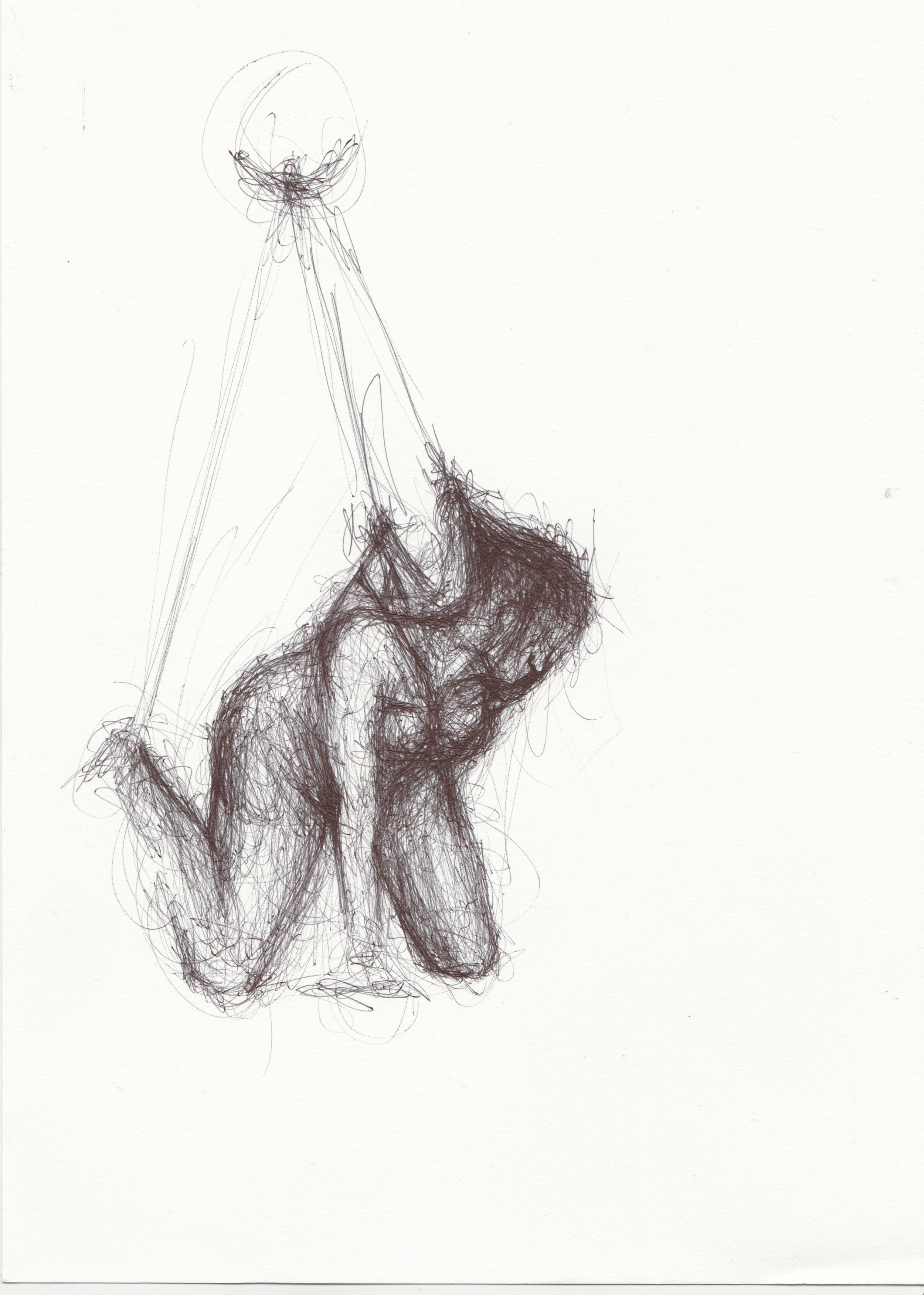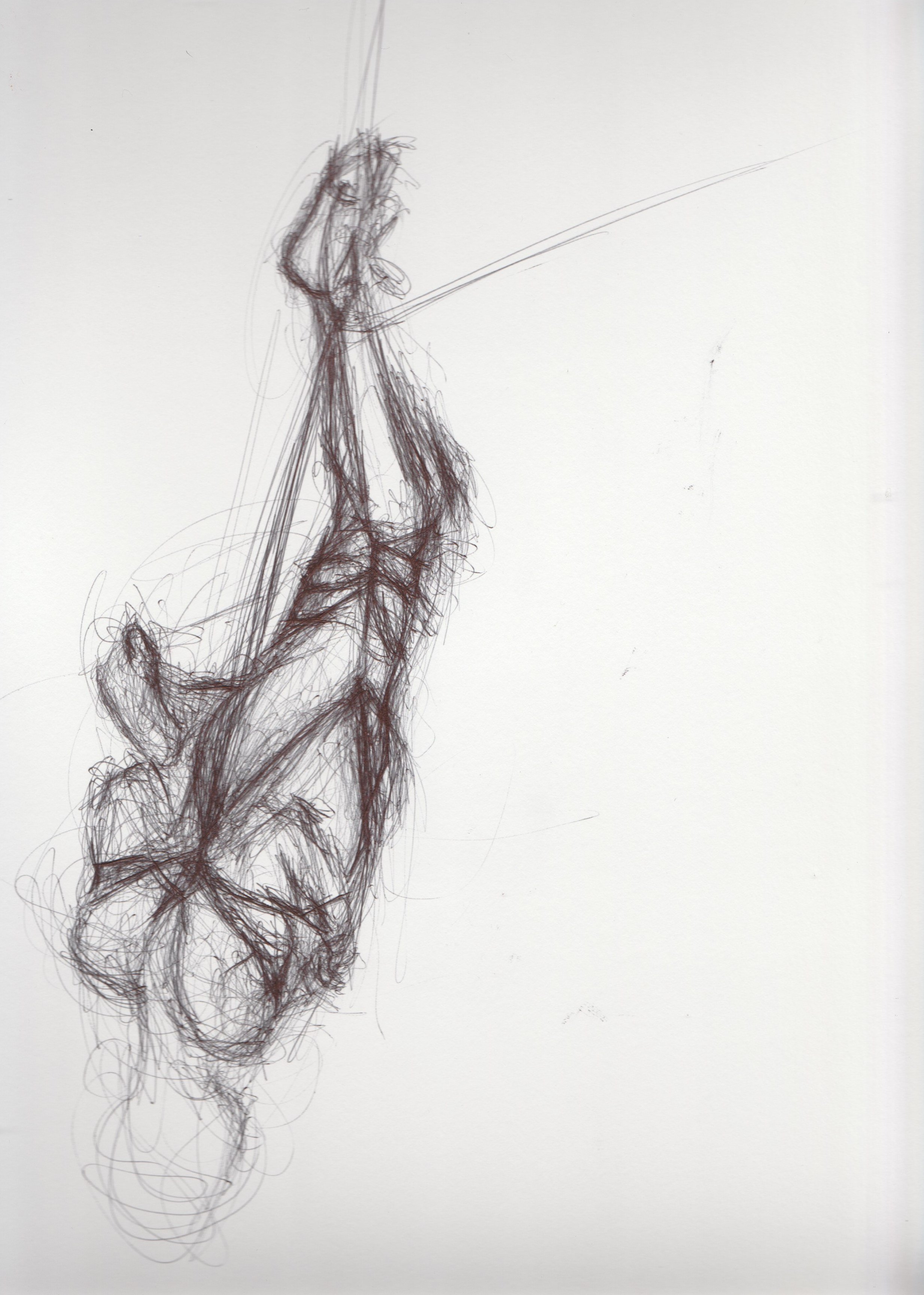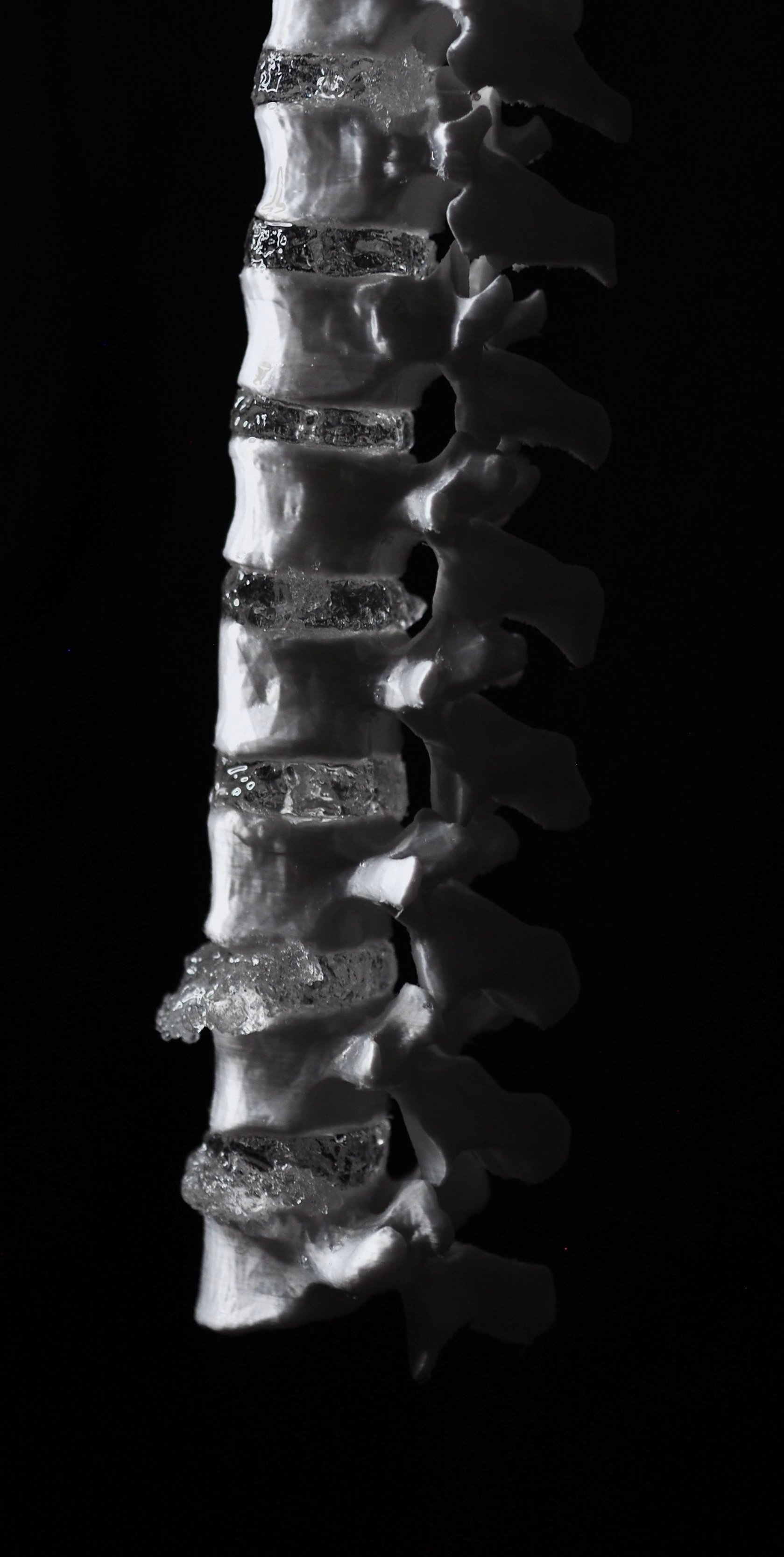MA Art & Science
Unit 3 - Journal
Research paper - Why am I in pain?
Leading on from unit 2 and my research paper I am starting with the idea of creating a tool that could be used to aid the understanding of my genetic collagen disorder called Ehlers Danlos Syndrome (EDS) in clinical and informal settings. In my personal experience I’ve seen EDS and patients deeply neglected, misunderstood and not believed.
My research paper 'Why am I still in pain?' investigated how anatomical and physiological understanding of EDS and Hypermobility Spectrum Disorder (HSD) affects patient agency. It also considered how art and artists could help create a more accessible form of education such as interactive sculpture and thus contribute towards this understanding.
This tool has taken the form of interactive anatomical sculptures that show particular implications of faulty collagen.
To read or download the full paper just click on the image to the left
Body Painting as a starting point
Depressurising the making



Anatomical Entanglement
In the same week of my unit 2 deadline I was diagnosed with ADHD and prescribed medication, and an hour after my submission my partner of 3.5yrs split up with me. This means I’ve gone into unit 3 with a huge amount of mental and emotional upheaval, The pressure and overwhelm is causing me to struggled with making work and being creative because of how it made everything come to the surface. In the past I have always used art as a way of processing things, this has been the first time where it’s been simply too painful.
In the last few days, 2 weeks post break up, I've felt I need to depressurise the making. I still haven’t really known how to start so I decided to paint freely on the area of my body where I feel most raw and where the emotions have been building up.
Alt text - Highly stylised video of a neck, shoulders and chest. Abstracted anatomy painted on with pinks, reds and whites. Contorted hands smearing the paint.
My drawings from the Francis Bacon show
Francis Bacon’s RA retrospective has been very timely. I’ve had a connection with his paintings since I was 12yrs old and staying at Great Ormond Street Hospital – It was the first time I’d seen the power of art to make people feel less isolated. His painting in the Tate modern looked like I felt, the pure visceral pain visible in the paint and the connection I had as a child is something I’ve carried through my practice.





Drawing from the body painting images
There’s a still I got from my body painting video that perfectly encapsulates how I’ve been feeling so I decided to draw it minus my head








Overwhelmed and Cracking
Making it life size on scrap cardboard - This self portrait illustrates a personal state of overwhelm, lost in the darkness, head missing and feeling exposed.
Alt text - A monotone charcoal drawing of body from mid thigh to shoulders, head missing and hunching over, ribs and shoulder blades jutting out awkwardly
iPad experiments - I’ve been feeling like this drawing is incomplete so I’ve been playing around with cutting it into sections to illustrate some of the disjointed disconnection
I think it worked better sectioned into pieces so for the installation I cut it and used red thread to stitch and suspend it.
Body casting

















Hanging by a thread
Hanging by a Thread is a visual representation of how it feels when overwhelm sets in. The things that are meant to support me and keep me healthy become suffocating, concentrating in my neck and making it feel as though there’s a tangled mess pulling in all directions and constricting my ability to talk, breath and even think.
A paraffin wax cast of my neck, shoulders, chin and chest painted with black acrylic paint and scraped away to show the skeletal anatomy underneath. The blood red wire and string connects to ECG connecters, that are from my last ECG test, which had me running on a treadmill topless attached to a 12 lead ECG pack and bp cuff.
The constant medical investigations/appointments/treatments, are necessary but are almost a full time job, always holding me back. Using up my energy to just stay healthy enough to have a life, to then not have enough energy to live it.



Because of the heat in the atrium after one day in the installation it melted beyond repair and as it’s set to go above 30 degrees on Friday I had to take it down.
Trip to Bethlem Museum of the Mind
David Parkin's Delusions of Grandeur
'“Multidisciplinary artist David Parkin presents a funny, fearless installation that tells you everything you didn't want to know about being sectioned.
In 2015 David Parkin suffered his first bi-polar manic episode and was sectioned for four months. ‘David Parkin’s Delusions of Grandeur’ is a multidisciplinary installation that investigates his stay at the NHS’s pleasure from a cacophony of mediums. Premiering in 2019 at The Attenborough Centre (Leicester) to an overwhelming public response, it quickly became the art centre’s most well attended artwork … ever.” from the museums website
Parkins exhibition is a brilliant example of showing the multi faceted and complex nature of severe mental illness, he shows how to display and discuss incredibly heavy and serious subject matter in a way that still shows the humour and lightness that is also present in this situation.
William Kurelek
While at the museum I spoke to one of the volunteers who explained to me how this painting by Kurelek, of what he visualised the inside of his skull looked like. It is used in med schools to teach the particular mental health conditions that he suffered from explaining what it feels like to live with these.
Shibari Life Drawings - Anatomie Studios
Shibari life drawing has become an essential part of my practice. The nature of Shibari means the model only stays in position for a maximum of 10 minutes, although usually not more than 5. This has lead me to develop a very frenetic style of drawing that mirrors my primary state of mind due to ADHD, chronic pain and stress.














Anatomical Models
Columns of Instability - spine
During unit 2 I was working with a friend to 3D print the vertebrae of a spine for the base for my first anatomical model. The print was finished just a couple days before my unit 2 submission.








I originally thought I’d make the spinal discs by casting them in latex, but my attempts at this aren’t working
I have some scraps of vulcanised latex sheet so have been experimenting with covering carved wax in the sheet but both are too strong to demonstrate the fragility of EDS/HSD discs
Glass silicone
Using Polytek Platsil Siliglass Rubber, a silicone used in TV & film to imitate glass, made it possible to show the fragility of the spinal discs. It's very brittle but still has some flex which is comparative to the qualities often seen in the connective tissues of those with faulty collagen disorders. Some of the corresponding complications shown in this model include disc herniation, thinning, degeneration, slipped discs and instability.
I’ve booked a meeting in the materials clinic with the materials librarian for some guidance on other possibilities for the discs. She showed me a few things that I’d like to try, particularly natural rubber that is unstabilised and comes in sheets or blocks, a type of silicone that is primarily used for films to mimic glass that shatteres and crumbles like glass but still has some flex and bioplastics that I can make in my kitchen.
I’ve started with casting small discs of the silicone and then carving them to the right shape and size, and using the offcuts in the next casts to reduce wastage
I’ve drilled through the vertebrae then fed them onto wire with the discs sandwiched between them
Once all the vertebrae and discs were on the wire I started painting layers of uncured silicone onto the discs to smooth them out, As the silicone cures it turns into a stretchy putty like substance. I’ve used this to create ‘herniated’ discs and other discs irregularities.







Left arm
Brittle Bonds
Brittle Bonds depicts the anatomy of a left arm. The joints of the arm, particularly the shoulder are amongst the most common dislocations seen in EDS/HSD.
The skeletal structure was made using 3D printing and the connective tissues fashioned using natural liquid latex. Natural latex rubber ages very quickly, becoming weaker, losing its elasticity and ability to bounce back to its original shape. These properties made it ideal to show how EDS/HSD joints are prone to pain, instability and injury. Additionally, how fast they can be worn down.












Presentation for Symposium







Shibari Performance
To bring together the different elements of my installation and show some of the perceptions of a wheelchair user I want to perform shibari suspension throughout the showcase.
It also plays into my running question of, Where does the line between support and restriction lies? As a way to visualise the paradoxes involved in comfort versus restriction, safety versus suffocation and the intimacy involved in pain & pleasure I want to suspend myself over my wheelchair inside my installation.
Here are some photos of me practicing self tying, tying others and being tied in the run up to the show.

















The performance
I originally wanted to have a partner for the performance because, while I have some self suspension experience and have self tied for 2 years now, I don’t really have the strength to lift myself up.
I spoke to quite a few people and practiced with them but ultimately no one was available at the time of the show. This worked out quite well for the performance as I decided use my wheelchair to support me and give me the hight to suspend over it. Also performing alone felt more poignant within the context of my installation and gave a different image of what a wheelchair user looks like and can do.
Image credit - Miguel Martim
Image credit - Miguel Martim
Installation planning
Calculating the strength for the scaffolding frame


































